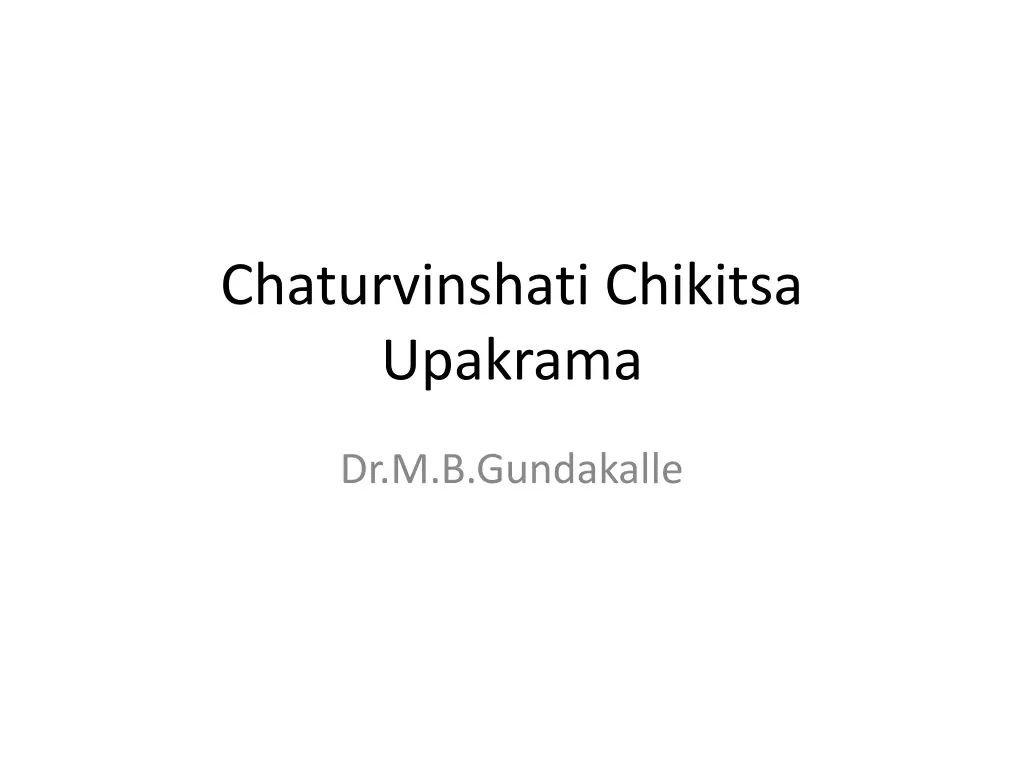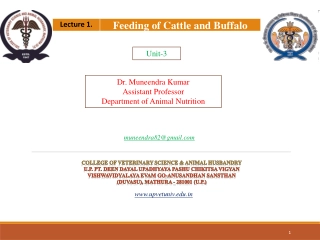
Ancient Ayurvedic Treatment Procedures for Visha Conditions
Explore traditional Ayurvedic treatment methods for Visha (toxic) conditions, including Agnikarma, Parisheka, Dhara procedure, Avagaham, Rakthamoksham, and more. Learn about immersions, cauterization, and bloodletting in managing poison-related issues. Discover the wisdom of ancient healing practices for toxic matters in the body.
Uploaded on | 3 Views
Download Presentation

Please find below an Image/Link to download the presentation.
The content on the website is provided AS IS for your information and personal use only. It may not be sold, licensed, or shared on other websites without obtaining consent from the author. If you encounter any issues during the download, it is possible that the publisher has removed the file from their server.
You are allowed to download the files provided on this website for personal or commercial use, subject to the condition that they are used lawfully. All files are the property of their respective owners.
The content on the website is provided AS IS for your information and personal use only. It may not be sold, licensed, or shared on other websites without obtaining consent from the author.
E N D
Presentation Transcript
Chaturvinshati Chikitsa Upakrama Dr.M.B.Gundakalle
|| || || [ ]| || || | || ||
Agni | | || ||( As 42) |(Cha Chi 23) It is indicated in Twak-Mamsagatha visha (Poison in skin & muscles) Dalhana opines that in viper bite agnikarma is contraindicated, it causes pitta aggravation and leads quick spread of poison. Material used for agnikarma are metals and cloth. In modern it is known as Cauterization. It destroys affected tissues and minimizes infection
Parisheka It is a type of drava sweda Vatika snehayuktham Paithika-ksheera yuktham Kaphaja-sura suktham etc.. Temp sukham
It is Dhara procedure It is the method of sprinkling medicated decoction over the site of bite. Decoction prepared by Chandana and Usheera is used for parisheka. Visha vega is prevented by using cold decoction. After raktamokshana (bloodletting) the remaining rakta will attain leenata because of the ushna guna of visha. For this Sheeta parisheka (Sprinkling) should be done . In Viper bite, the commonly practiced dhara is Panchavalkala kwatha dhara. In Cobra bite Grtha saindhava dhara is used.
In visha conditions Raktha sthambhanam Pain management Vrana sodhanam Moorcha Sthavara visha After raktha moksha In special conditions like udavartha, moothraghatha | Ah U
Avagaham Type of swedanam Thairreva va dravai poornam kumbham sarvangage anile Similar in character of parisheka Vrana sodhana Conditions like moothraghata,moothra krichra &udavartha
Avagaha means immersion or dipping the affected part in the medicated decoction or oil. As per modern terminology it is known as immersion bath. They help in proper circulation and eliminates toxic matter from the body
Rakthamoksham Sa hyasya paramakriya Why rakthamoksha? Raktha dushti prakrithi dushti pranathyaga Methods Achooshana,Prachanam,Srungam,Jalooka, siravyadhanam
|| | || || Once the visha enters the body Rakthamokshana is said to be the parama chikitsa . In all cases of snake bite, the physician should puncture the vein in the upper or lower limbs and in forehead region. By this visha will be eliminated from the body with blood and saves the life of the person. If visualization of the vein is good then Raktamokshana can be done with Shrunga and Jalouka. If blood does not come from the site of bite- pragarshana (rubbing) should be done with Trikatu (Zingiber officianale, Piper nigram, Piper longum), Grhadhuma, Rajani (Curcuma longa). As the poison spreads the patient will suffer from intoxication, depression, so application of cold therapy will alleviate such complication.
In poisonous bite -before the venom entering to blood( esp in mamsala desa) In all snake bite cases- in first vega In Lootha visha
Vamanam || || vishagaraajeerna virudha
Indications In sthavara visha conditions 1st& 2ndvegas In darveekara visha 4thvega In mandali visha 2nd& 4thvega In rajila visha-2nd& 4thvega In gara & doosheevisha conditions -for sodhana purpose
Virechanam virechanam pithe Visham Raktha dushti Kapha pitha dushti
Indications In Sthavara visha -2ndvega In Darveekara visha 5th& 6thvega In Mandali & Rajila visha 5thvega In gara visha,dusheevisha In lutha ,mooshika & alarka
Virechana Yoga in Visha condition Neelini choorna(Indigofera tinctoria) with milk, Trivrit choorna(Operculina turpethum) along with Triphala kwatha
UPADHANA Upadhana is a special procedure in which medicine is applied over the incised scalp. This treatment is to be done if the patient is not having asadhya lakshana. After making incision like crow s feet, bilwa pramana of mamsa made out of Chagha (goat), Gavya (cow), Mahisha (buffalo), Kukkuta (cock) should be applied on the incised area. According to Vagbhata, if the snake bite is in lower part of the body incision is to be made on scalp. Similarly if it is in the upper parts then incision is to be made in the feet






















